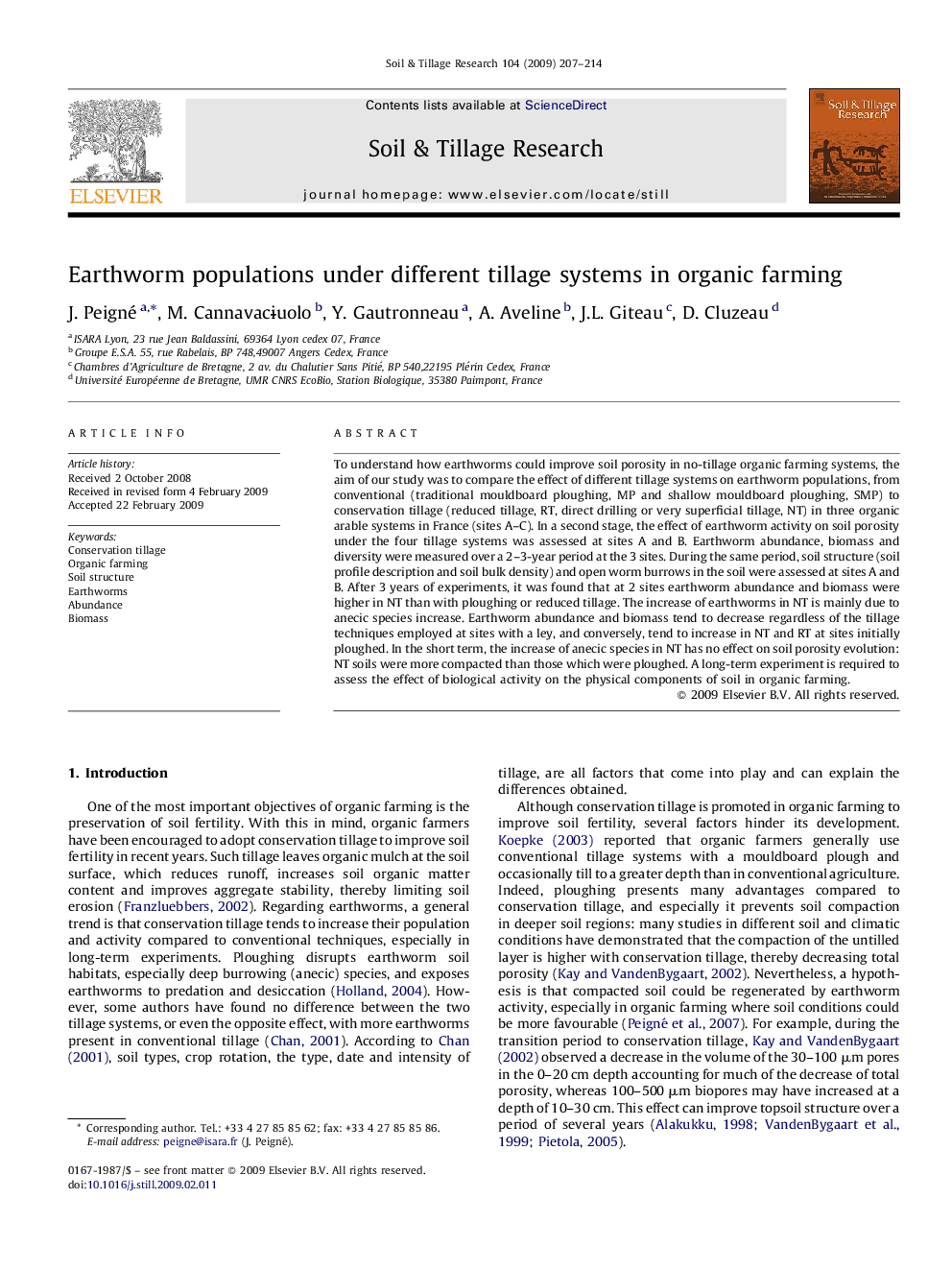| Article ID | Journal | Published Year | Pages | File Type |
|---|---|---|---|---|
| 306368 | Soil and Tillage Research | 2009 | 8 Pages |
To understand how earthworms could improve soil porosity in no-tillage organic farming systems, the aim of our study was to compare the effect of different tillage systems on earthworm populations, from conventional (traditional mouldboard ploughing, MP and shallow mouldboard ploughing, SMP) to conservation tillage (reduced tillage, RT, direct drilling or very superficial tillage, NT) in three organic arable systems in France (sites A–C). In a second stage, the effect of earthworm activity on soil porosity under the four tillage systems was assessed at sites A and B. Earthworm abundance, biomass and diversity were measured over a 2–3-year period at the 3 sites. During the same period, soil structure (soil profile description and soil bulk density) and open worm burrows in the soil were assessed at sites A and B. After 3 years of experiments, it was found that at 2 sites earthworm abundance and biomass were higher in NT than with ploughing or reduced tillage. The increase of earthworms in NT is mainly due to anecic species increase. Earthworm abundance and biomass tend to decrease regardless of the tillage techniques employed at sites with a ley, and conversely, tend to increase in NT and RT at sites initially ploughed. In the short term, the increase of anecic species in NT has no effect on soil porosity evolution: NT soils were more compacted than those which were ploughed. A long-term experiment is required to assess the effect of biological activity on the physical components of soil in organic farming.
